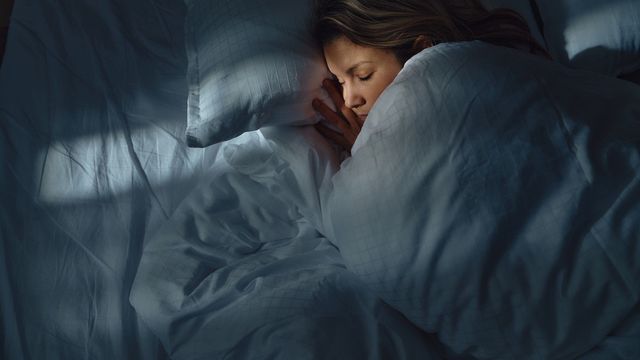
What causes us to sleep? The answer may lie not only in our brains but in their complex interplay with the micro-organisms spawned in our intestines. New research from Washington State University (WSU) suggests a paradigm shift in understanding sleep, demonstrating that a substance in the mesh-like walls of bacteria, known as peptidoglycan, is naturally present in the brains of mice and closely aligned with the sleep cycle.
These findings serve to update a broader hypothesis that has been in development at WSU for years — proposing that sleep arises from communication between the body’s sleep regulatory systems and the multitude of microbes living inside us. “This added a new dimension to what we already know,” said Erika English, a PhD candidate at WSU and lead author on two recently published scientific papers introducing the findings.
The Holobiont Hypothesis: A New Perspective on Sleep
This view of sleep as arising from that “holobiont condition” joins a growing body of evidence suggesting that our gut microbiomes play an important role in cognition, appetite, sex drive, and other activities. This perspective turns traditional brain-centric models of cognition upside-down and has implications for our understanding of evolution and free will, as well as the development of future treatments for sleep disorders.
The recent findings regarding peptidoglycan, or PG, lend weight to that hypothesis and point to a possible regulatory role for bacterial cell wall products in sleep. PG is known to promote sleep when injected into animals, but until recently, the conventional view held that it did not naturally migrate to the brain.
Scientific Insights and Implications
English found that PG, along with its receptor molecules involved in PG signaling and communication, was present in different locations within the brain, at levels that changed with the time of day and sleep deprivation. The findings were reported in July in Frontiers in Neuroscience; longtime WSU sleep researcher and Regents Professor James Krueger co-authored the paper. English is also the lead author of a recent paper with Krueger in the journal Sleep Medicine Reviews that proposes the “holobiont condition” hypothesis of sleep.
“It’s not one or the other, it’s both. They have to work together,” English said. “Sleep really is a process. It happens at many different speeds for different levels of cellular and tissue organization and it comes about because of extensive coordination.”
The paper combines two prevailing views. One posits that sleep is regulated by the brain and neurological systems. Another focuses on “local sleep,” which frames slumber as the result of an accumulation of sleep-like states among small cellular networks throughout the body. Such sleep-like states have been observed among cells in vitro, known as the “sleep in a dish” model.
Revolutionizing Our Understanding of Human Neurology
Links between the microbiome and behavior are emerging on several fronts, indicating that micro-organisms formed in the gut play an important role in cognition and fundamental human behaviors. This work challenges the traditional view of human neurology, suggesting that it is not completely top-down — i.e., the result of decision-making in the brain — but bottom-up — i.e., driven by the tiny organisms whose evolution shaped animals to serve as their hosts and whose needs influence the activities and cognition of their hosts.
“We have a whole community of microbes living within us. Those microbes have a much longer evolutionary history than any mammal, bird, or insect — much longer, billions of years longer,” said Krueger, who was named a “Living Legend in Sleep Research” by the Sleep Research Society in 2023. “We think sleep evolution began eons ago with the activity/inactivity cycle of bacteria, and the molecules that were driving that are related to the ones driving cognition today.”
English’s work expands upon known links between bacteria and sleep, including the fact that sleep patterns affect the function of the gut microbiome and that bacterial infections cause people to sleep more.
Future Directions and Continued Research
The new findings begin to delve into questions that English looks forward to exploring further. “Now that the world has come to appreciate how important microbes are, not just for disease but also for health, it’s a very exciting time to start to expand on our understanding of how we are communicating with our microbes and how our microbes are communicating with us,” she said.
As research continues, the implications of these findings could reshape how we approach sleep disorders and overall health, offering new avenues for treatment and prevention. The exploration of the microbiome’s role in sleep is just beginning, and future studies may unlock even more secrets about this intricate interplay between our bodies and the microscopic world within us.
Reference: English EL, Krueger JM. Bacterial peptidoglycan levels have brain area, time of day, and sleep loss-induced fluctuations. Front Neurosci. 2025;19:1608302. doi: 10.3389/fnins.2025.1608302







